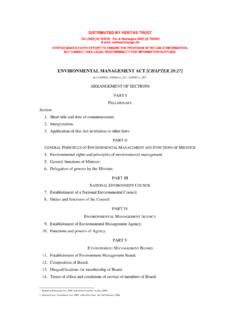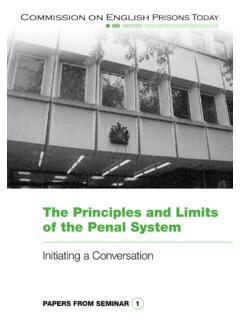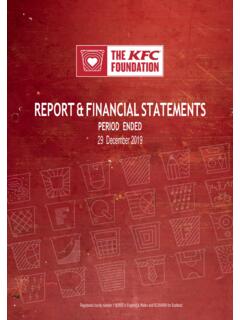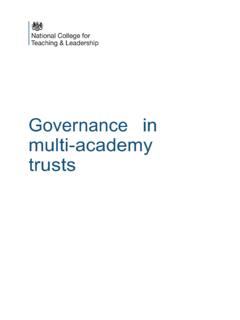Transcription of A survey of challenges, opportunities and threats faced by ...
1 1 A survey of challenges, opportunities and threats faced by students with disabilities in the post-independent era in Zimbabwe Compiled by Chiparaushe Booker, Mapako Obert and Makarau Arthur of University of Zimbabwe Disability Resource Centre For 2 ACKNOWLEDGEMENTS The Student Solidarity Trust (SST) extends its appreciation to its long time partner, Students and Academics International Support Fund (SAIH), for its support for this research project and many others. Our sincere gratitude is also extended to our research consultants Booker Chiparaushe, Obert Mapako and Arthur Makarau of the University of Zimbabwe (UZ) Disability Resource Centre (DRC). We also acknowledge the role played by the Permanent Secretary in the Ministry of Higher & Tertiary Education in granting permission to carry out this study in all Universities, Teachers Colleges and Technical Colleges in Zimbabwe.
2 Cheerful thanks also go to SST staff and in particular Trevor Murai for his field monitoring of the research and editorial scrutiny. Lastly our special thanks go to all the respondents who participated freely in this study by completing questionnaires and taking part in interviews and focus group discussions. This research was funded by SST. However the findings, interpretations and conclusions expressed in this report are entirely those of the author(s) and should not be attributed to SST , which does not guarantee their accuracy and can accept no responsibility for any consequences of their use. ABSTRACT This research was carried out with the main aim of bringing out the challenges, opportunities and threats faced by students with disabilities and conditions who are enrolled in institutions of higher education in Zimbabwe.
3 The study covered three provinces namely Harare, Bulawayo and Midlands targeting all universities, both teachers and technical colleges in these respective provinces. To collect data the researchers used questionnaires, interview schedules and focus group discussions. The questionnaires targeted administrators, lecturers and students with disabilities and conditions while interviews and focus group discussions were aimed at capturing data from students with disabilities and conditions. The data collected was analyzed using (SPSS) method and the results were presented in form of tables and pie charts. The population was composed of 103 students with disabilities and conditions, 9 administrators and 11 lecturers which make a total of 123 participants.
4 The sample had 50 students with disabilities and conditions, 20 both administrators and lecturers making a total of 70 participants. Main findings from the study Inaccessibility of buildings for example lecture theatres or rooms, halls of residence, toilets and tubs thereby disadvantaging greatly those students who are physically challenged; Shortage of equipment and materials for example Perkins Braille machines, Pac-Mates, Tape Recorders, brailed textbooks or reading materials for the visually impaired students; The majority of students with disabilities fall under the category of the visual impaired; Offices of Vice Chancellors, Pro-Vice Chancellors and Registrar in majority of state universities are not accessible to students in wheel chairs.
5 3 In all tertiary education institutions the majority if not all lecturers in post have no formal training in handling students with disabilities; In natural sciences and technical subjects there is lack and in some institutions un-availability of trained lecturers to teach students with disabilities; Most institutions of higher learning discourage and or marginalize students with disabilities who intend to pursue natural sciences; At A-level, of which the A-level qualification is used as entrance at universities, fewer disabled students who would have passed O-level choose sciences subjects. Additionally disabled students generally perform badly in sciences; Donations by well wishers and support by the international community to students with disabilities have dwindled in the past decade due to Zimbabwe s sour relations with countries in the West; There is lack of programmes to sensitize able-bodied students and other college /university staff that is not directly involved with students with disabilities on the needs and plight of students with disabilities; In most tertiary education institutions there are no waiver of tuition fees, no special budgets and no affirmative action to aid students with disabilities.
6 Study findings reveal that all institutions of higher learning are not mainstreaming HIV and AIDS issues in programmes for students with disabilities. There is lack of peer counseling, lack of HIV and AIDS promotional material available in a format accessible to various categories of students with disabilities; Visually impaired students faced mobility problems as information of changes in the environment like digging of trenches is not communicated to them, further cars parked in undesignated areas, obstacles such as chairs left on their paths, open doors in corridors present everyday challenges in their mobility hence the need for able-bodied students sensitization programmes; Visually impaired students also had challenges accessing communication pasted on notice boards in print.
7 For students with Albinism their main concern was inability to read lecture notes on chalkboards during lectures and also failure to read notices on notice boards due to their short-sightedness. Also these students are not provided with their special skin lotions to protect them from sun burns. On sports the main findings were that there was the lack of specially trained instructors to cater for students with disabilities and conditions. 4 TABLE OF CONTENTS CONTENT PAGE Acknowledgements i Abstract ii Table of contents iii List of tables iv List of figures CHAPTER ONE THE PROBLEM AND ITS SETTING Introduction 1 Background of the study Statement of the problem Justification of the study Objectives of the study 3 Significance of the study 3 Research question 3 Definition of key terms Delimitations of study 5 CHAPTER 2 Literature review Introduction 6 What is Disability?
8 Mainstreaming disability Legislation 6 United Nations Initiatives 6 Disabled Persons Act (DPA) of 1994 9 5 Disability and Human Rights 9 college and University students with disabilities 10 Institutional Mission 10 Policy Issues 11 Disclosure of Disability 14 CHAPTER 3 RESEARCH METHODOLOGY Introduction 12 Research design Disadvantages of the descriptive survey technique Population Sample 13 Instrumentation Data collection procedure Data analysis 18 Pilot study Results of Pilot study 19 Summary CHAPTER 4 DATA ANALYSIS, INTERPRETATION AND DISCUSSION Introduction 20 Questionnaire Responses Administrators Responses Interviews SUMMARY.
9 CONCLUSIONS AND RECOMMENDATIONS Introduction 41 6 Summary Conclusion Recommendations REFERENCES 41 LIST OF TABLES Table Page : Distribution of lecturers at State Universities according to subjects they teach students with disabilities 20 Table : Provision of Extra time for students with disabilities work by lecturers 23 Table : Prevalence rate of Trained Teachers 23 Table : Types of disabilities that the Universities are catering for 28 Table : Existence of Special Legislation in Institutions Charter 31 Table : Provision of Sports for students with disabilities 32 Table : Mainstreaming of students with disabilities in HIV and AIDS, Peer Counseling Services 32 List of Figures 7 Acronyms AIDS Acquired Immuno-Deficiency Syndrome AU Africa University CRPD Convention on Rights of Persons with Disabilities DRC Disability Resource Centre DPA Disabled Persons Act FGD Focus Group Discussions GPA Global Political Agreement HIV Human Immuno-Virus ICT Information and Communication Technology ILO International Labor Organizations IYPD MSU Midlands State University NUST National University of Science and Technology SPSS Statistical Package for Social Scientist SST Student Solidarity Trust UCE United college of Education UDHR Universal Declaration of Human Rights MDGs Millennium Development Goals UN United Nations UZ University of Zimbabwe ZOU Zimbabwe Open University
10 8 ABOUT SST It was born out of the Zimbabwe National Students Union, as a strategic vehicle to deal with practical solidarity issues for the student s movement. To date the SST has assisted well over 95 student activists with continuing their education after being expelled, and at least 1248 students who have found themselves in situations where they were being persecuted for participating in the struggle for the right to education and respect for student and academic rights. The first 15 student activists to complete their education through the assistance of the SST graduated in 2006, and where honored by the students movement at a ceremony dubbed the Against All Odds Ceremony on November 17 2006 in Bulawayo SST PROGRAMS 1. Students Social Safety Net Program The Students Social Safety Net (SSSN) is a solidarity program that the SST uses to cushion student activists and leaders from the effects of politically motivated Victimisation by way of suspensions and expulsions.


![The Non-Governmental Organisations Act [Chapter…]](/cache/preview/0/c/1/f/8/3/5/e/thumb-0c1f835e29b6c7beeaf77237168102b9.jpg)






